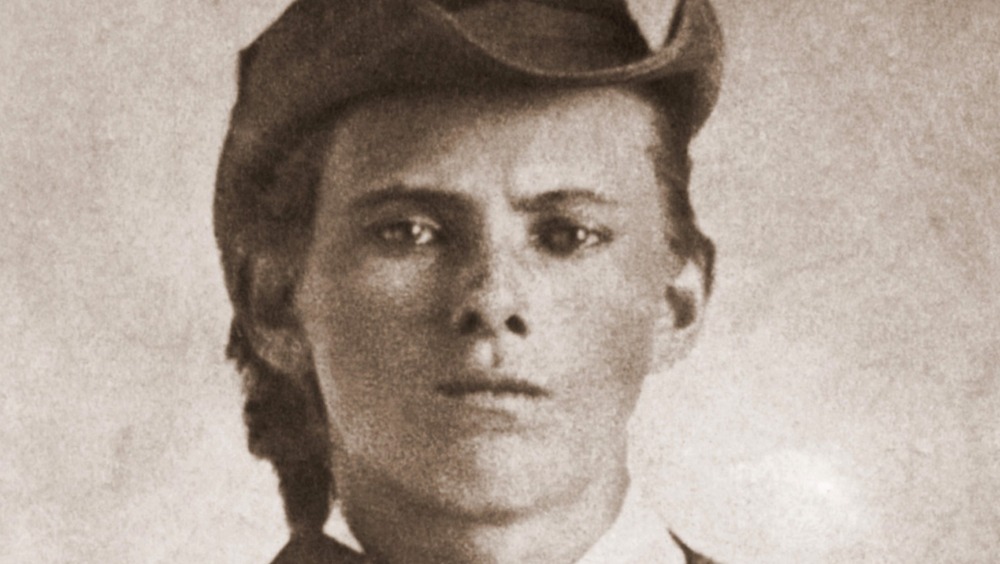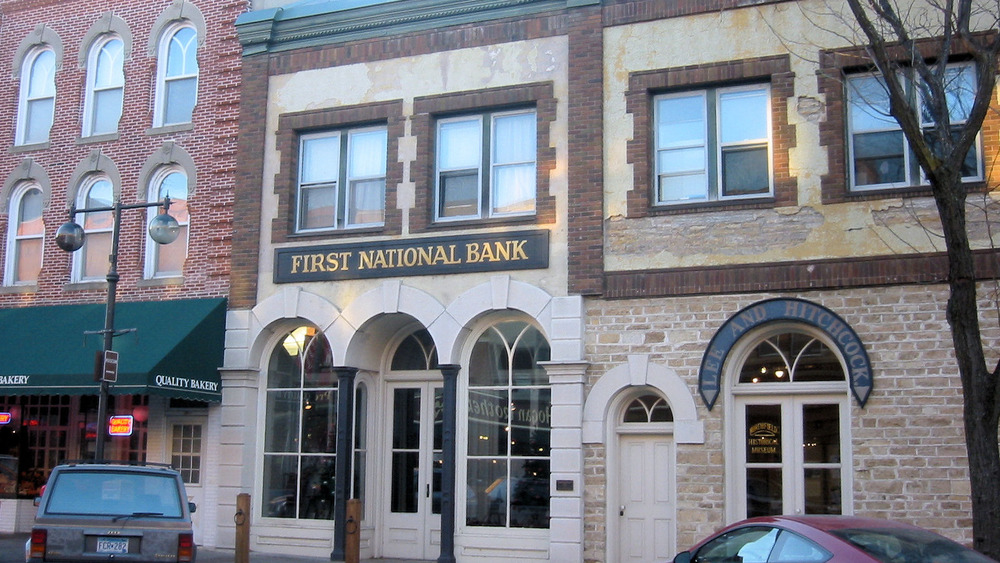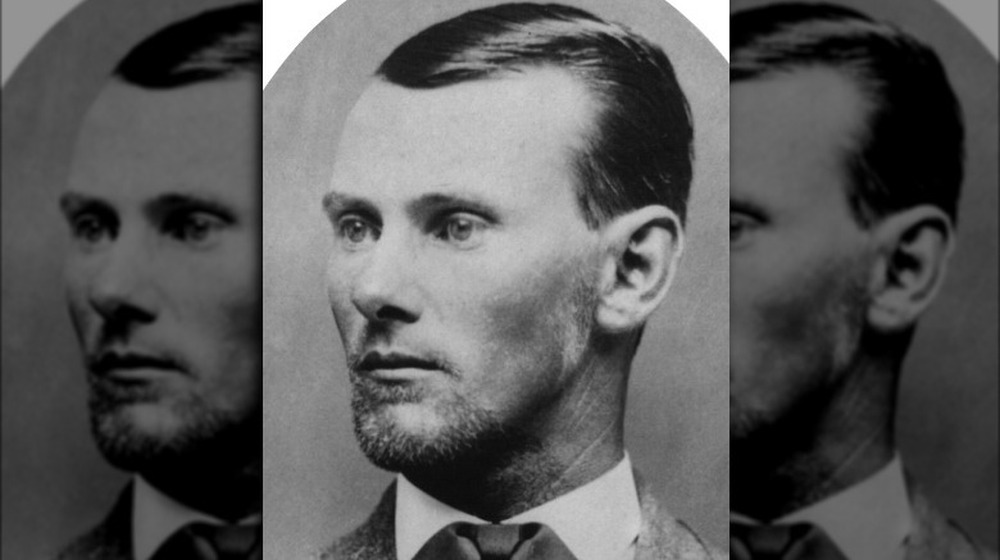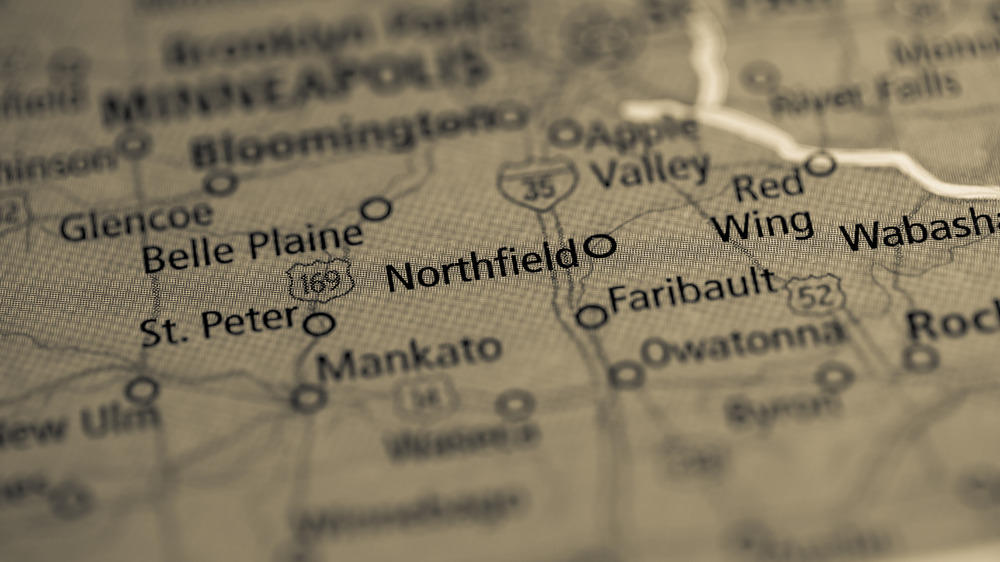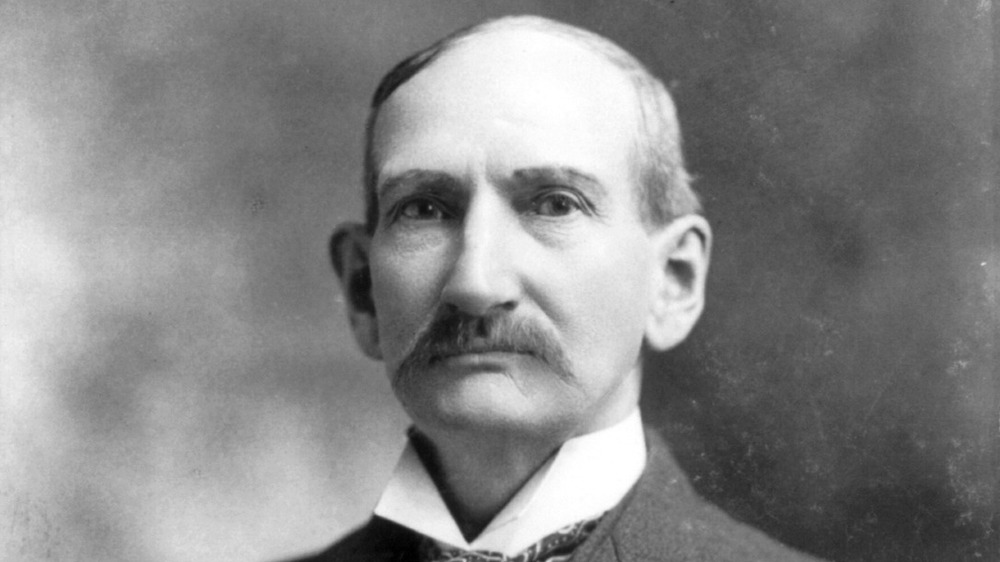A Look At Jesse James' Failed Bank Robbery Attempt
For a period of time in the mid-to-late 1800s, perhaps no name struck more fear into the people of the Western (at the time) part of the country than that of Jesse James. Over the course of a decade and a half (give or take), the Missouri outlaw and his gang relieved multiple banks and railroads of hundreds of thousands of dollars (millions in today's money), killing at least 17 people in the process, according to Legends of America.
Unfortunately for James and his gang, not every bank robbery was a rousing success. Indeed, one bungled hold-up in Minnesota ended with two of his own men dead and two or three wounded (accounts vary), with James fleeing for his life and the law closing in on him. It would be the final caper of the dreaded James-Younger Gang, the botched robbery effectively ending the marauders' reign of terror. James himself would be dead a few years later, shot in the back and killed by one of his own men for the reward money (most of which the killer never got).
The James-Younger Gang's marauding days came to an end on September 7, 1876
By September of 1876, things weren't looking good for the James-Younger Gang. Months earlier, according to WBUR, the gang had successfully relieved the Missouri Pacific Railroad of an undisclosed amount of money. However, one of James' men, a new recruit named Hobbs Kerry, was captured in the "Rocky Cut" raid, and once behind bars, was more than happy to snitch on his gang.
Further, the Pinkerton Detective Agency was on the gang's trail, and they were motivated: According to The Chicago Tribune, at least one innocent civilian had died due to the detective agency's zeal to corral the James boys, and the public was getting fed up. With the railroads, the banks, and the general public having had their fill of the gang's antics, and with the Pinkertons and the law closing in on them, the gang set their sights on Minnesota, well outside of their usual area of operations.
On the afternoon of September 7, eight members of the James-Younger Gang rode into Northfield, Minnesota. Their target was the First National Bank and its store of cash and gold. It would be the gang's last hurrah.
The people of Northfield, Minnesota weren't interested in putting up with the James Gang that day
What began as a "textbook" James-Younger Gang robbery, as The Northfield Historical Society described it, quickly turned sour for the bandits.
As author Ted P. Yeatman wrote in his book, Frank and Jesse James: The Story Behind the Legend, at about 11 a.m. the gang split into two groups, with three men going inside to rob the bank, two taking positions outside the door, the remaining three taking positions around the area. Inside the bank, one of the bandits attempted to force cashier Joseph Lee Heywood to open the safe, which he refused to do, claiming that it was guarded by a time-lock (it wasn't). For his heroism, he was cut with a knife, knocked in the head with the butt of a pistol, and ultimately, shot and killed. Another employee, assistant cashier Alonzo Enos Bunker, took one or more bullets to the shoulder while fleeing the bank, and survived.
Meanwhile, townsfolk had gotten suspicious about the ruckus inside the bank, and sounded the alarm. Soon, armed citizens were firing at the James Gang, and the gang was firing back.
The town of Northfield commemorates the failed James Gang Raid annually
For the people of Northfield, the failed James-Younger Gang robbery there wasn't just a footnote to an ugly period of American history: It was the day their town shone brightly.
The names of the townsfolk who gave or risked their lives that day live on in honor in the community. Gustafson, the unlucky Swede who happened to be in the wrong place at the wrong time. Joseph Lee Heywood, the brave cashier who refused to break his employers' trust and open the safe. A.R. Manning, who shot and wounded two gang members and killed a third.
Every year (when there isn't a global pandemic going on, that is), on the first weekend after Labor Day, the Northfield Historical Society puts on the Defeat of Jesse James Days, where local townsfolk celebrate the heroes who brought down America's most notorious outlaws, dressing as the key players and staging re-enactments of the event.
The botched raid effectively destroyed the James Gang
When the dust had settled in Northfield, two members of the James Gang were left dead on the streets, the remainder fleeing the town. One Northfield civilian, a Swedish immigrant named Nicholas Gustafson, also died in the gunfight.
After a manhunt, the Youngers and fellow gang member Charlie Pitts were cornered. Pitts died in the ensuing gunfight, and the Youngers were taken prisoner, ultimately appearing before a court to answer for their crimes.
Frank (pictured above) and Jesse James, for their part, managed to elude the authorities — for a while. Jesse later recruited another gang and returned to his life of crime, however briefly. On April 3, 1882, a few years after the Northfield raid, James' own man, Robert Ford, shot him in the back, hoping to collect the reward money, according to The New York Times.
Frank, according to The New York Times, appears to have retired from crime after Northfield. A few months after his brother Jesse was killed, he turned himself in. He was tried for various crimes that did not take place in Minnesota, acquitted on all of them, and died an old man in 1915. He was never brought to Northfield to answer for his role in the failed raid that ended his gang's reign of terror.
